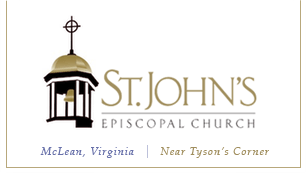In my last year of seminary, all of my Episcopal classmates and I took a weekly practicum that was colloquially referred to as “Mass Class.” We’d studied the theology of worship, the history and development of the Book of Common Prayer and different ways of worshipping in the Anglican Tradition around the world. And now it was time to actually put all of that theory into practice.
The first thing our professor told us was that he wasn’t going to teach us the “right way” to worship. There were some confused looks exchanged around the room. He went on to explain that instead he wanted to equip us to ask the right questions about worship practices. Rather than a rigid set of rules, we learned to evaluate liturgy within the specific contexts in which we would serve. What is appropriate in the Cathedral of St. John the Divine may not be appropriate in our own outdoor Cathedral Shrine of the Transfiguration. The natural flows of worship at St. Andrew’s in Richmond might not feel right at St. John’s in McLean and vice versa.
I’ve been so grateful for this approach to learning liturgy as I’ve transitioned between parishes. But never was it so useful as it was in the spring of 2020 when we all had to radically reimagine how we worshipped in our communities. With no notice, all of our familiar ways of worshipping were no longer available to us. We had to begin discerning both what was practically possible and what was essential to making it feel like our worship.
I imagine there were a lot of conversations at St. John’s like the ones we had at St. Andrew’s. What was vital in our worship? Which is more important, maintaining everything we were used to doing or tailoring liturgy to the reality that it was going to be viewed on a screen in our homes, with a multitude of available distractions? Even when we made decisions, we evaluated and revisited them many times over the course of the pandemic. What was still working? What needed tweaking?
As we slowly emerge from the pandemic and are returning to rhythms of worship that feel more normal, more familiar, we are in many ways still asking these questions. What did we learn from our many pandemic adaptations? What is worth holding on to? What is vital in what we are offering now and in the future?
Over the coming weeks, you may notice some ongoing tweaks being made in our worship, particularly at 9:00 am on Sundays. We’ve heard that it’s important to many of you that there be the opportunity to receive communion every week, so that will remain a weekly service of Holy Eucharist. (Though I would be remiss if I didn’t plug the beauty of starting your Sunday with communion bright and early at 7:45!) We’ve also heard from many of you that you liked the shorter outdoor services, so we’re working to do some judicious trimming in the service to tighten it up. You’ll notice different Eucharistic Prayers, including from the Episcopal Church’s Enriching Our Worship and perhaps from other parts of the Anglican Communion, so that we all might hear these ancient prayers in new ways.
The word liturgy literally comes from the Greek meaning “the work of the people.” Our worship is the work of our specific community. As we make these small changes, we are guided by the core question—is this the best possible expression of St. John’s worship in the spring of 2022? What is essential and what can we do to help everyone best experience that?
I can’t wait to worship with you, either in person or online, soon!


